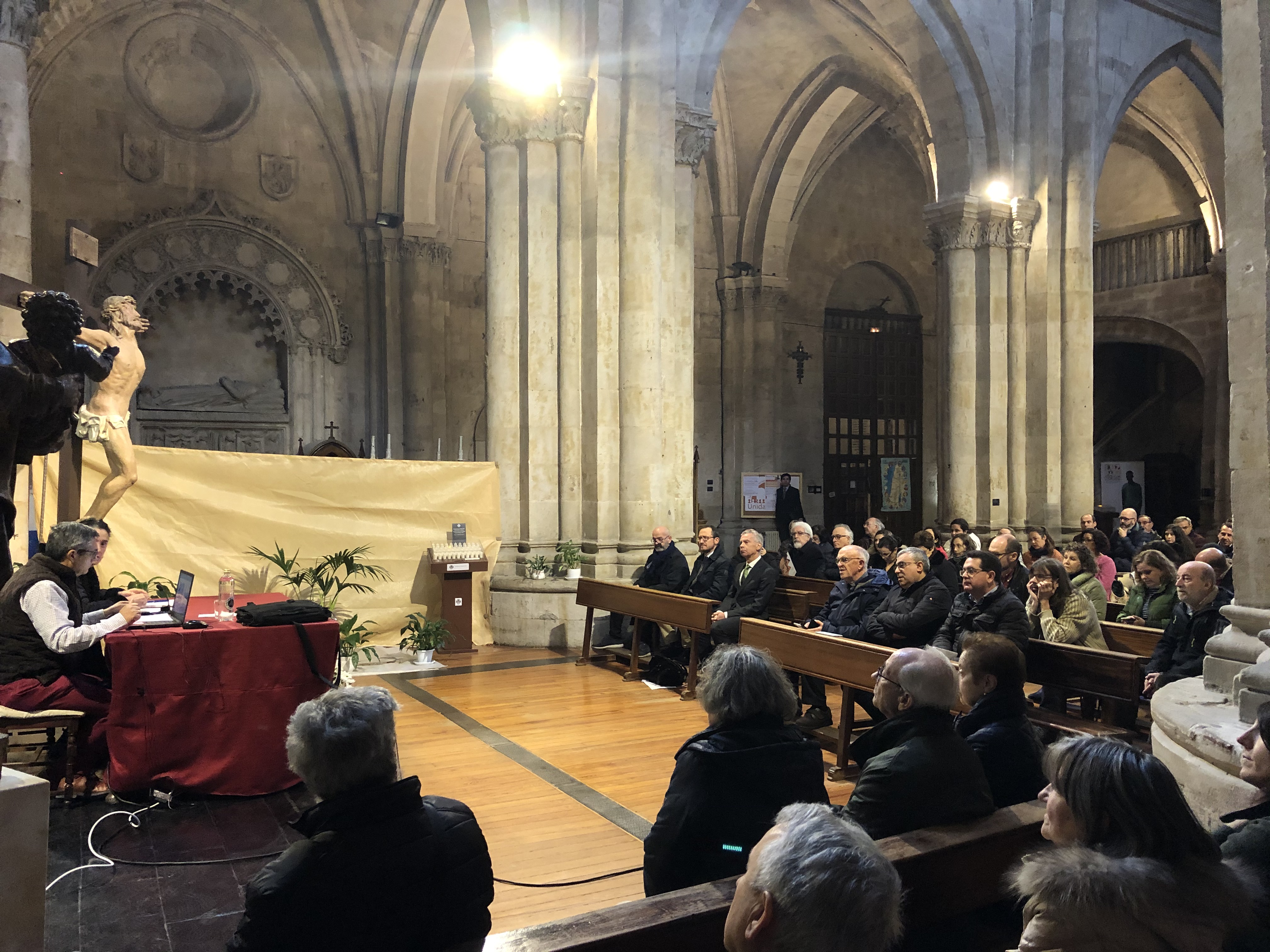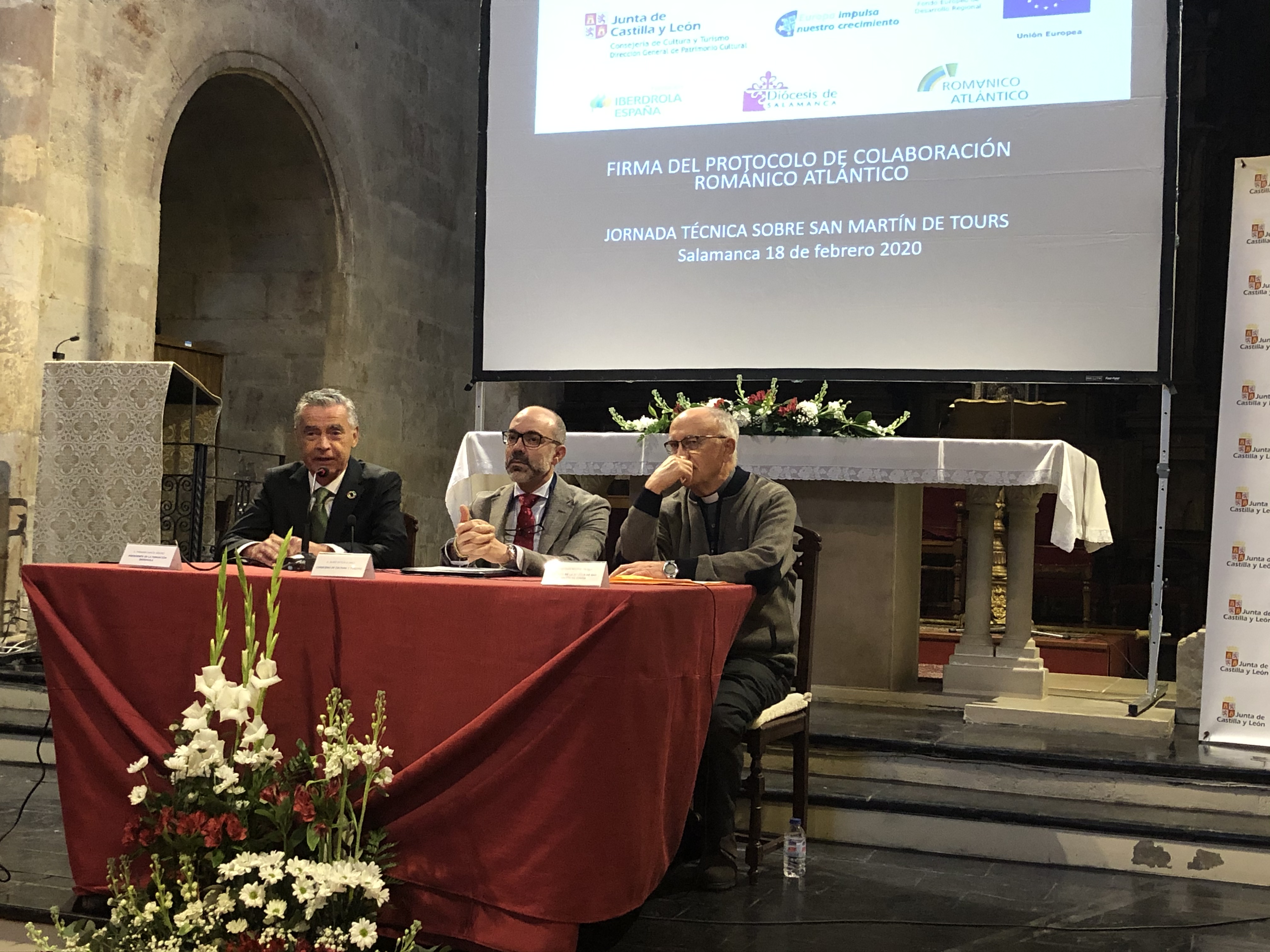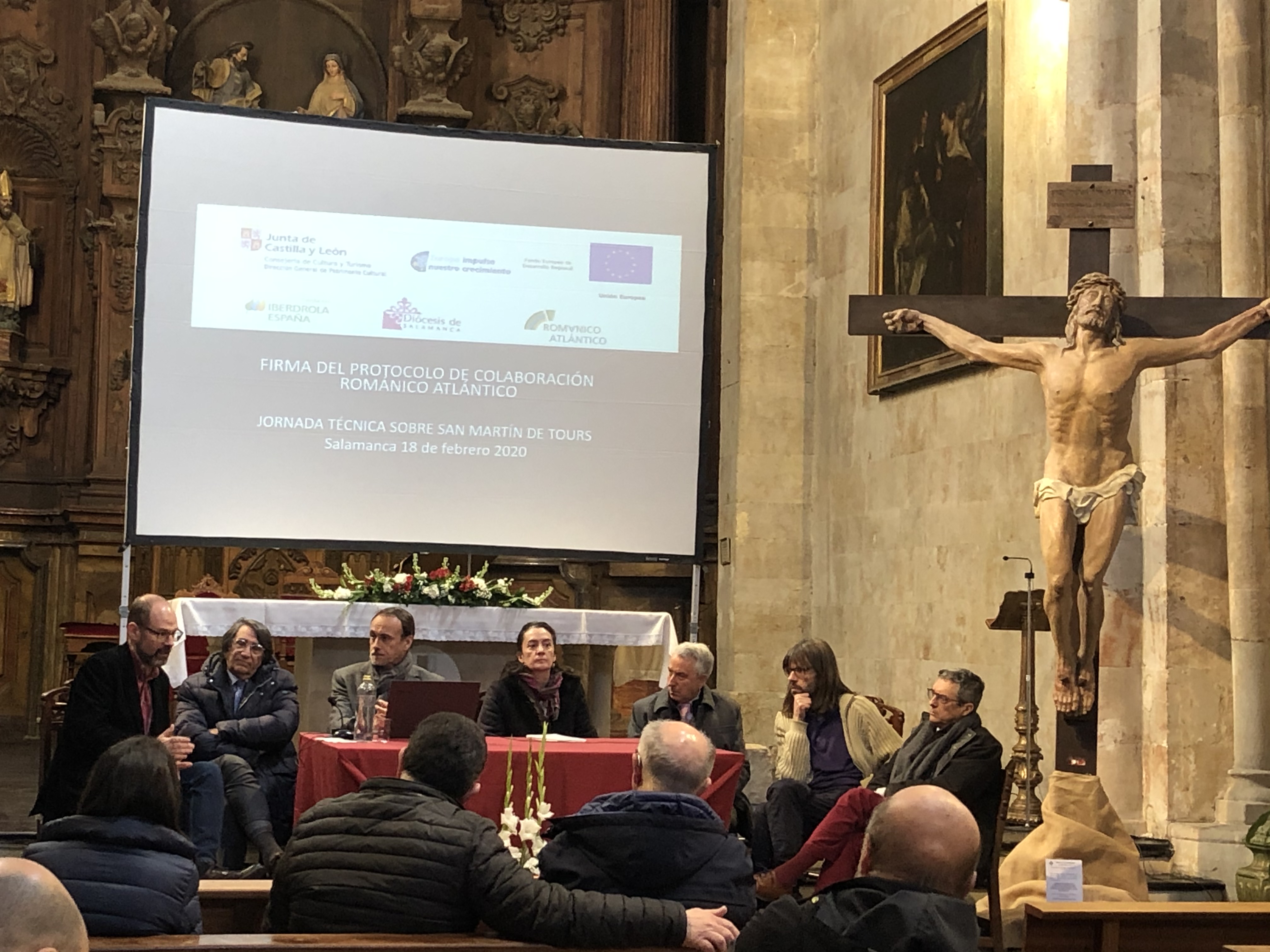The spirit of this Plan as a cross-border cooperation project and public-private collaboration is being maintained thanks to the agreement FundaciĂ³n Iberdrola España has reached with the Portuguese Ministry of Culture. The plan aims to conserve, restore and highlight the importance of the cultural heritage in the provinces of Zamora and Salamanca and the border regions of Porto, Vila Real and Braganza. The activities undertaken by the Regional Government of Castile and LeĂ³n will be co-financed by the European Fund for Regional Development (ERDF)
Along with the activities undertaken on the buildings, Atlantic Romanesque will also continue to promote the revitalisation of the areas in which it acts to generate their socio-economic development by carrying out cultural and informative activities, like the event held today in the church of San MartĂn de Tours in Salamanca
The regional minister of culture and tourism, Javier Ortega, and FundaciĂ³n Iberdrola España general director, RamĂ³n Castresana, in the presence of FundaciĂ³n Iberdrola España chairman, Fernando GarcĂa, this morning signed the collaboration protocol between both organisations to continue with the Atlantic Romanesque Plan over the next four years (2020-2023).
The signing took place during the technical open day held at the church of San MartĂn de Tours in Salamanca, which served as an opportunity to place the building within the context of the city and review the actions carried out in the church within the auspices of the Plan.
The seminar was attended by, among others, representatives from the diocese of Salamanca and the parish of San MartĂn, as well as the Regional Government General Director of Heritage, Gumersindo Bueno. The agreement signed today between the Regional Government of Castile and LeĂ³n and FundaciĂ³n Iberdrola España is part of the PAHIS 2020 Plan for the Cultural Heritage of Castile and LeĂ³n and gives continuity to the works undertaken within the Atlantic Romanesque Intervention Plan since 2010.
Technical open day
The warping in the pillars, arches and vaults of the three naves in the church of San MartĂn de Tours, which dates back to the building’s construction and the various modifications made throughout its history, have justified a complete study of the sequence in which the building was constructed. This has included an analysis of the evolution in its architecture that was tackled by several multidisciplinary teams coordinating with each other, who have updated knowledge about this Asset of Cultural Interest from different perspectives.
The objective of this research, which was carried out over two years, was to obtain the most accurate diagnosis possible regarding the current condition of the monument in order to address its restoration, using all the available information to preserve its historical legacy, as explained in today’s technical open day, which some of the experts who undertook the research participated in.
JosĂ© Luis MartĂn MartĂn, who has a PhD in Medieval History from the University of Salamanca, was responsible for placing the church within the urban context of the city. Marco Antonio GarcĂ©s, an architect with the General Directorate of Heritage, explained the work methodology. JosĂ© Miguel Lorenzo, who has a PhD in Art History, took participants on a journey through the archives to trace the history of the church. JosĂ© Ignacio Murillo Fragero, an archaeologist with Urbe pro Orbe, and Rafael MartĂn Talaverano, who has a PhD in architecture from the Polytechnic University of Madrid, talked about the different construction methods used. Manuel Fortea Luna, who has a PhD in architecture and a PhD in history from the University of Extremadura, explained the structural study of the building and, finally, JesĂºs Castillo Oli, an architect with the Santa MarĂa la Real Foundation, focused on the current consolidation work on the building.
Historical context and how San MartĂn de Tours has changed over time
The Church of San MartĂn de Tours has been declared a Historical-Artistic Monument and, together with the Catedral Vieja (Old Cathedral), it is the city’s most significant Romanesque building. It was built in the twelfth century on the site of a previous building, and has undergone numerous refurbishments over time. All these activities have affected its structure and have been analysed as part of the Plan in order to understand how the building behaves today and arrive at the most appropriate option to guarantee its conservation.
The original structural problem has previously been documented and acted upon without resolving it completely. Hence, in this case, it was decided to monitor the space to gather real data on its condition. The first sensors were installed in 2015 and the building’s behaviour has been under constant observation ever since.
The information provided by the monitoring and the studies and reports that have been carried out in parallel, including a high-precision survey that was the key to understanding the church’s structural behaviour, confirmed that the building has undergone various transformations as a result of changes in the materials used in its construction, and that although the urban nature of its location has harmed it in some aspects, it has also led to the building remaining standing. The main conclusion of the reports and the structural evaluation study carried out by the Regional Government of Castile and LeĂ³n is that the loads supported by the building’s Romanesque walls are unbalanced and they need to be redistributed to improve the building’s structural safety margin.
Redistribution of the weight of the roof
The structural evaluation study was the basis for drawing up the most suitable project for the building. The activities currently being undertaken will modify the support points for the current roof, which was restored during the 1990s, to better distribute its weight over the Romanesque walls, thus moving and centring the loads.
The activity will take six months and adds to those carried out so far within the Plan, which have involved investment of close to 356,000 euros. Along with the intervention on the roof, over the last few years, urgent actions have been undertaken to alleviate the problems derived from collapses and losses in the structure. For example, in 2015, works were undertaken on the first section of the Gospel nave, known as the Puerta del Obispo or Bishop’s Gate, which showed the greatest signs of damage.
The works also allowed access to eventually be recovered through the church’s north door and, in addition, an information and reception point for visitors was prepared and opened in 2017. Similarly, access to the Capilla del Carmen chapel was improved, where a rich Romanesque doorway with original polychromy was preserved and given more energy-efficient lighting that is more in line with the setting.
The work to the roof is the priority, but this will not be the last or the only intervention to take place in the building. While the structural problem is being corrected and solved, work is being carried out on outlining a new project that will allow the property to be adapted to the requirements of a space located in the heart of a historic city, which combines its religious use with the artistic and historical interest it arouses in the many visitors who pass by its doors every day.




